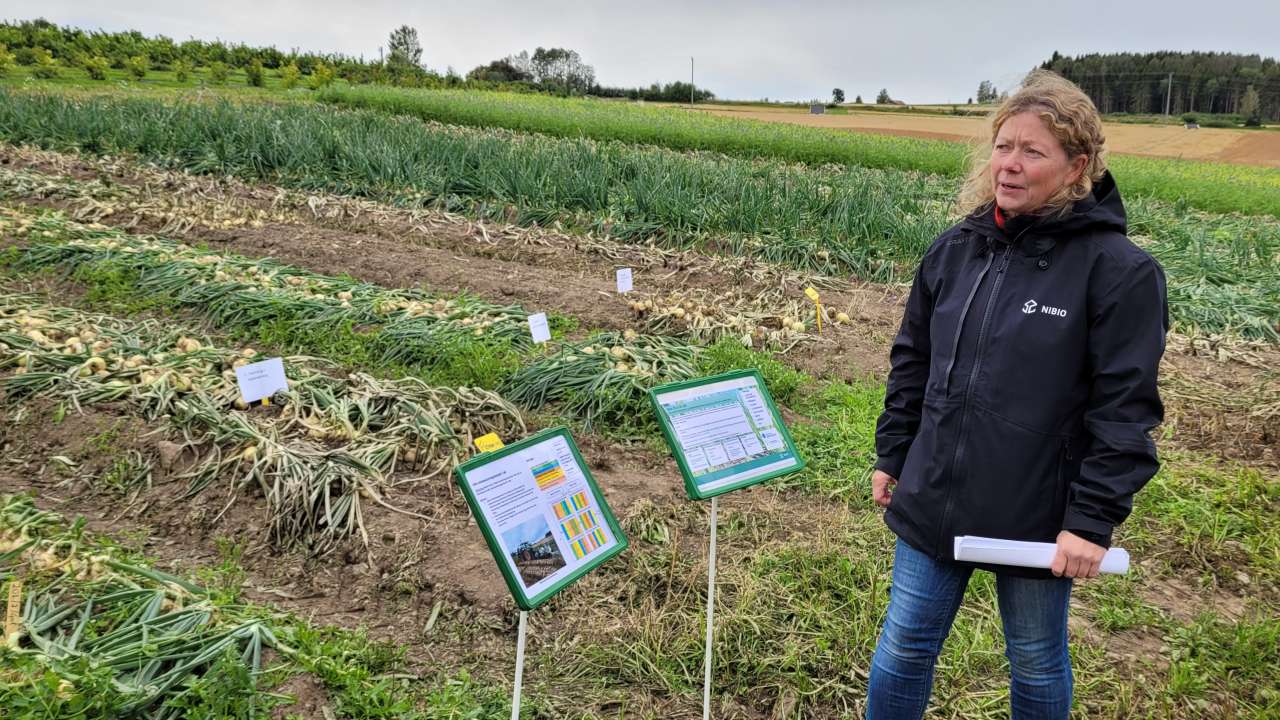More Norwegian onions on the plate

Photo: Morten Günther
Onions are the third most consumed vegetable in Norway and are also important at a global level. A new research project aims to further increase the quality and status of Norwegian onions.
On average, Norwegians eat 5.66 kg of onions per year, while onion consumption worldwide is 11.9 kg per person. According to the Norwegian Fruit and Vegetable Information Office, onions are one of the healthiest foods we can eat. Norway is largely self-sufficient when it comes to onions, and through the project “More Norwegian Onions,” NIBIO will follow the onion from farm to table.
The aim is to develop new future-oriented and market-adapted onion products for the Norwegian market. Optimising the quality of the raw material will also ensure good product quality and reduced waste from raw material stocks and packaging.
As part of the project, BAMA will carry out market research to find out what onion products consumers want. One of the options may be to introduce some new varieties of onions, perhaps one with a slightly sweeter taste.
NIBIO will take a closer look at the different producers’ cultivation practices, such as strategies for watering and growth termination, and how these affect the quality and shelf-stability of the onion.
“Most Norwegian onion producers practice curing, which makes the onion more resilient against disease and water evaporation,” says Pia Heltoft, researcher at NIBIO.
With increasingly fluctuating and wetter weather conditions, however, it is beneficial to use methods that reduce the drying time.
“We will for instance examine whether drying with propane torches prior to harvesting could reduce the drying time and improve storage quality. Trimming the tops can also reduce drying time, but the method can lead to the development of fungus and bacteria.”
Heltoft hopes the project will contribute to increased Norwegian onion consumption, new future-oriented onion products and higher quality onions from production warehouses and packagers.
Contacts

Pia Heltoft Thomsen
Research Scientist
-
Division of Food Production and Society
(+47) 920 80 939 pia.heltoft@nibio.no Office Location: Apelsvoll
Contacts

Pia Heltoft Thomsen
Research Scientist
-
Division of Food Production and Society
(+47) 920 80 939 pia.heltoft@nibio.no Office Location: Apelsvoll
